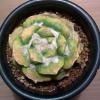Sign in to follow this
Followers
0

What are the differences between the fruit producing varieties from Hylocereus?
By
gr33ntea, in Cacti & Succulents

By
gr33ntea, in Cacti & Succulents